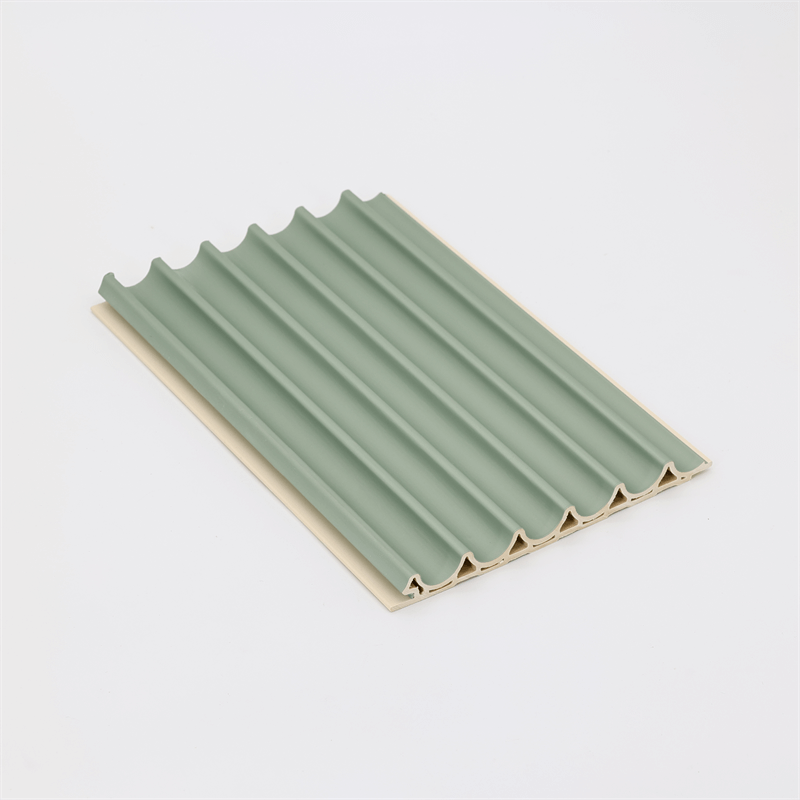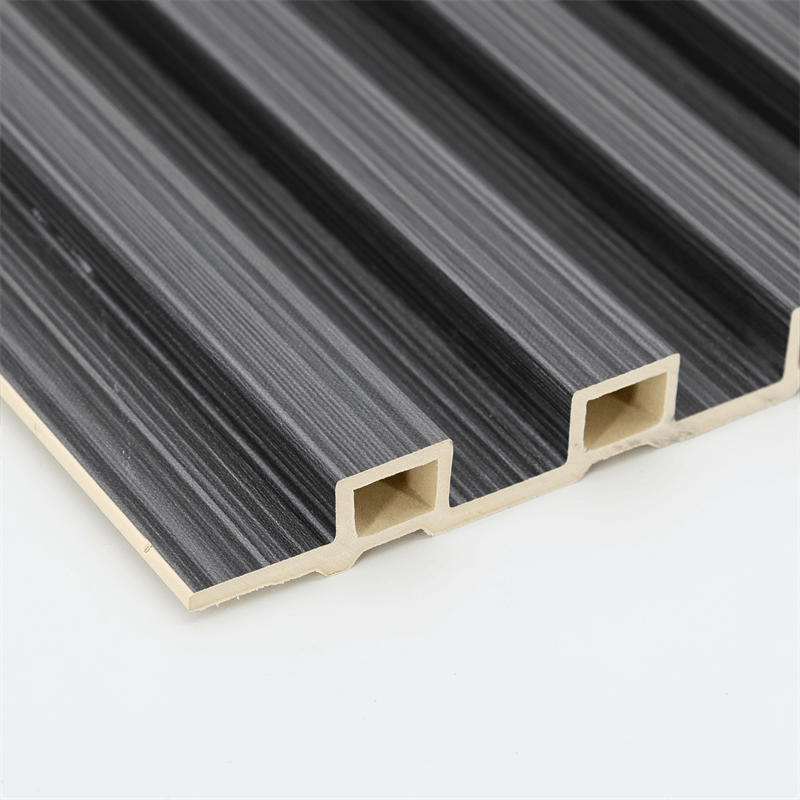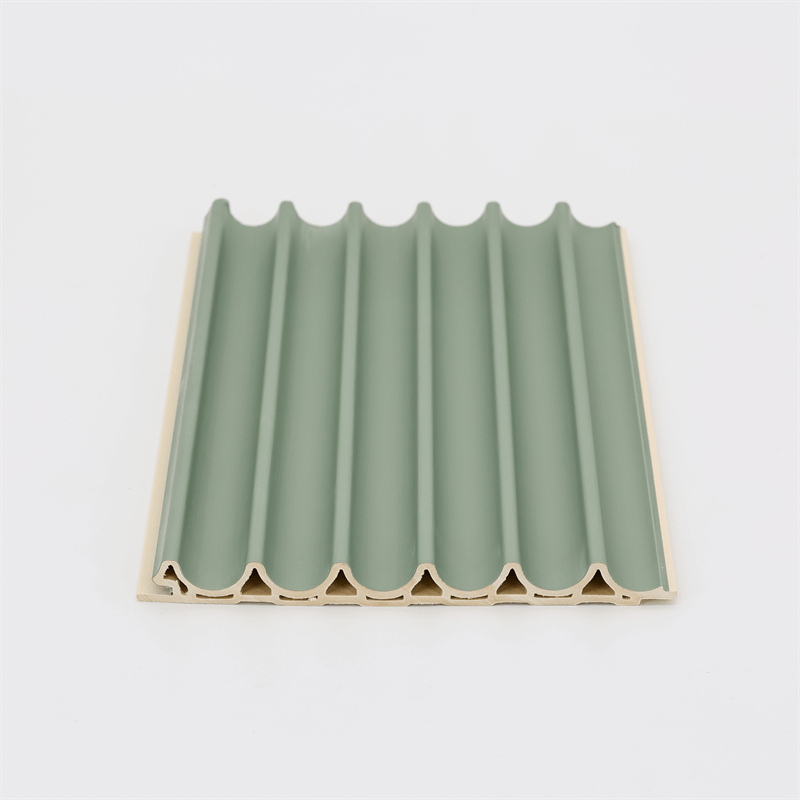In the realm of interior and architectural design, aesthetics play a vital role in creating visually captivating and engaging spaces.
Wood-Plastic Composite (WPC) wall panels have emerged as a popular choice for designers and architects due to their exceptional aesthetic appeal and diverse design possibilities.
This essay explores the aesthetic qualities of WPC wall panels and delves into the various design opportunities they offer, including texture, color, pattern, and integration with different architectural styles.
I. Texture: Adding Depth and Visual Interest
One of the key elements that contribute to the aesthetic appeal of WPC wall panels is their texture.
These panels can be manufactured with a variety of surface textures, ranging from smooth and sleek to rough and textured.
The texture of WPC panels adds depth and visual interest to interior and exterior spaces, creating a tactile and immersive experience for occupants.
For instance, panels with a wood grain texture can mimic the appearance of natural wood, providing warmth and character to a space.
On the other hand, panels with a more contemporary and abstract texture can create a sleek and modern ambiance.
The texture of WPC wall panels allows designers to play with contrasts, combining different textures to create visual focal points and enhance the overall aesthetic impact of a space.
II. Color: Versatility and Customization
Color plays a significant role in influencing the atmosphere and mood of a space.
WPC wall panels offer a wide range of color options, allowing designers to customize the aesthetic of a project to suit their vision.
From earthy tones to vibrant hues, the versatility of WPC panels enables designers to achieve their desired color palette and create harmonious environments.
Moreover, the color of WPC wall panels is often fade-resistant and long-lasting, ensuring that the visual impact remains consistent over time.
This durability allows for the creation of enduring designs that maintain their aesthetic appeal even in high-traffic or exposed areas.
III. Pattern: Designing with Creativity and Expression
WPC wall panels provide designers with the opportunity to explore patterns and designs, adding a sense of creativity and expression to their projects.
These panels can be manufactured in various sizes and shapes, allowing for intricate patterns, geometric arrangements, or even three-dimensional designs.
Patterns created with WPC wall panels can transform a space from mundane to extraordinary.
Whether it’s a striking feature wall, a captivating ceiling design, or a unique partition, the versatility of WPC panels enables designers to unleash their creativity and design spaces that make a lasting impression.
Furthermore, the integration of different panel sizes or the combination of smooth and textured panels can create dynamic and visually engaging patterns.
The ability to play with patterns and designs using WPC wall panels opens up endless possibilities for designers to craft unique and memorable spaces.
IV. Integration with Architectural Styles: Enhancing Cohesion and Harmony
The aesthetic appeal of WPC wall panels lies not only in their individual qualities but also in their ability to seamlessly integrate with various architectural styles.
These panels can be incorporated into different design concepts, ranging from traditional to contemporary, allowing for cohesive and harmonious spaces.
For instance, in a contemporary setting, WPC wall panels with a sleek and minimalistic design can complement the clean lines and simplicity often associated with modern architecture.
On the other hand, in a traditional or rustic setting, panels with a textured surface and warm colors can enhance the charm and authenticity of the space.
By integrating WPC wall panels with different architectural styles, designers can create a cohesive narrative throughout a project, ensuring that the aesthetic appeal extends beyond the individual panels and contributes to the overall design concept.
The aesthetic appeal and design possibilities of WPC wall panels make them a versatile and popular choice for designers and architects.
The texture, color, and pattern options offered by these panels allow for creative expression and customization, enabling designers to bring their visions to life.
Furthermore, the ability of WPC wall panels to seamlessly integrate with various architectural styles enhances the cohesion and harmony of a space.
As the demand for visually striking and engaging spaces continues to grow, WPC wall panels offer designers the opportunity to create unique and captivating interiors and exteriors.
The aesthetic qualities of these panels, combined with their durability and sustainability, make them an ideal choice for projects where aesthetics and design possibilities are paramount.

In essence, the aesthetic appeal and design possibilities of WPC wall panels empower designers to push the boundaries of creativity and create visually stunning spaces that captivate and inspire.
By incorporating these panels into their projects, designers can elevate the aesthetics and functionality of their designs, shaping the future of interior and architectural design.
In conclusion, the aesthetic appeal and design possibilities of WPC wall panels have revolutionized the world of interior and architectural design.
The texture, color, pattern, and integration capabilities of these panels offer designers endless opportunities to create visually captivating and engaging spaces.
Through the diverse range of surface textures, WPC wall panels add depth, tactile experience, and visual interest to interiors and exteriors.
The versatility in color options allows designers to customize the aesthetic palette and create harmonious environments.
The ability to play with patterns and designs unleashes creativity and enables the design of unique and memorable spaces.
Furthermore, the seamless integration of WPC wall panels with various architectural styles enhances cohesion and harmony, ensuring a unified design narrative.
The incorporation of WPC wall panels empowers designers to push the boundaries of creativity and express their unique visions.
These panels enable the creation of visually stunning, functional, and sustainable spaces that leave a lasting impression on occupants.
As the demand for aesthetically pleasing and inspiring spaces continues to rise, WPC wall panels provide designers with a valuable tool to elevate the visual appeal and design possibilities of their projects.
With their durability, customization options, and ability to seamlessly integrate with different architectural styles, WPC wall panels have become an indispensable choice for designers and architects.
In the ever-evolving world of design, WPC wall panels represent a gateway to unlimited creative expression.
By embracing the aesthetic appeal and design possibilities of these panels, designers can shape the future of interior and architectural design, creating spaces that inspire, delight, and stand the test of time.


